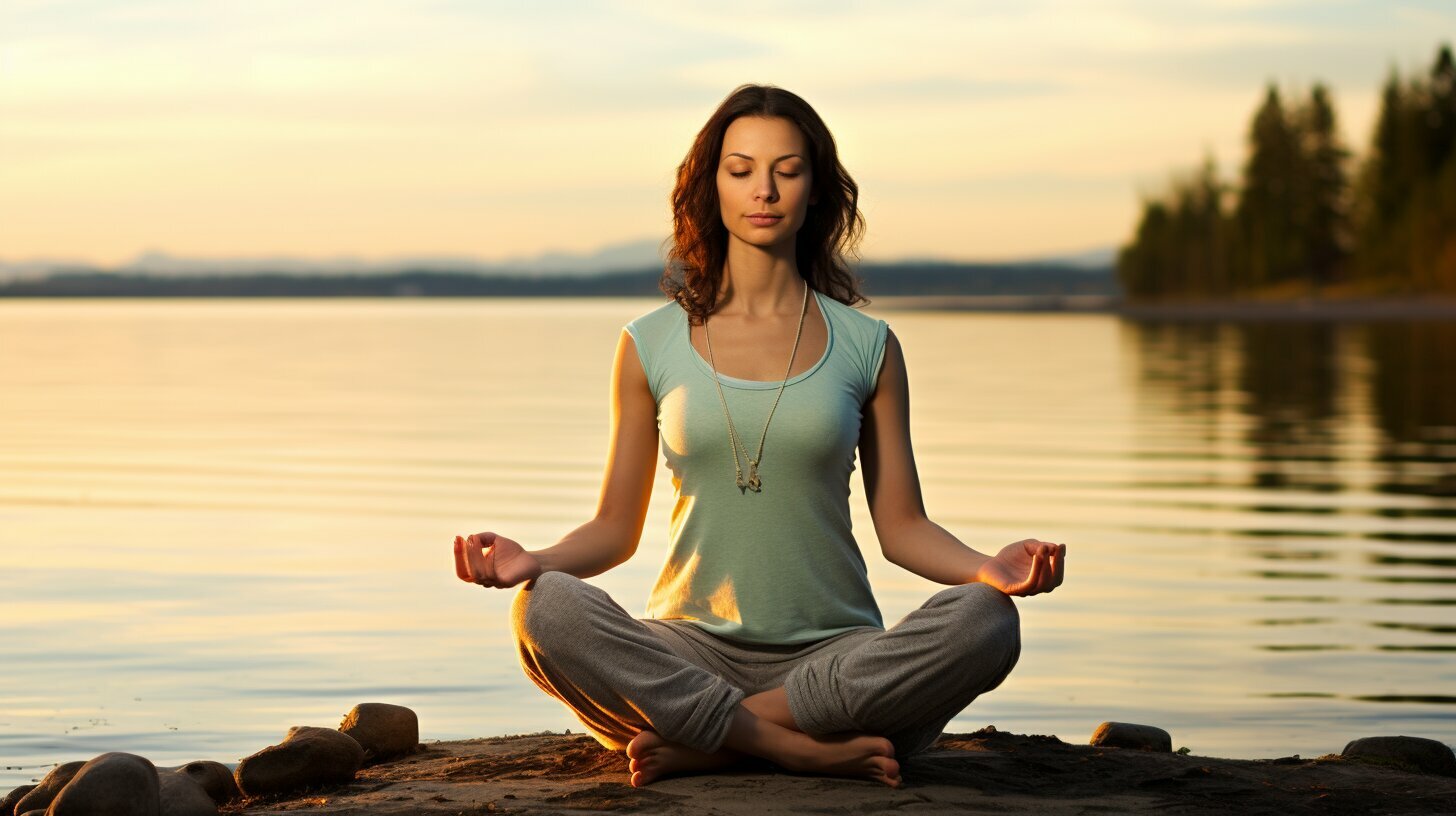As a yoga teacher, it’s important to present oneself in a way that exudes professionalism while also being comfortable enough to practice yoga. Finding the balance between these two elements can be tricky, but with the right guidance, you can create a dress code that works for you. In this section, we’ll explore the key essentials of a yoga teacher dress code, including the purpose of dressing appropriately, the importance of comfort, maintaining professionalism, and more.
- A well-thought-out yoga teacher dress code strikes a balance between professionalism and comfort
- Dressing appropriately contributes to creating a conducive learning environment for your students
- Comfort is key when it comes to yoga attire, allowing for ease of movement during practice
- Maintaining professionalism includes dressing modestly and presenting a clean and neat appearance
- Adapting your attire to different yoga styles and class settings is important for being a knowledgeable and dedicated yoga teacher
Understanding the Purpose of a Dress Code
As a yoga teacher, your attire plays a significant role in creating a conducive learning environment for your students. A purposeful dress code establishes professionalism, ensures comfort for both the teacher and students, and promotes a distraction-free yoga practice.
The purpose of a dress code for yoga teachers is multifaceted. It sets expectations for a professional appearance, and it ensures that your attire allows for ease of movement during yoga practice. A comprehensive dress code also considers the various yoga styles and class settings, so as not to distract students or inhibit your own practice. Ultimately, dressing appropriately demonstrates your dedication to the practice of yoga and your students’ well-being.
It is essential to understand the purpose of a dress code as a yoga teacher and to choose attire that reflects your understanding. A dress code speaks volumes about your personality and professionalism and should reflect the values that you uphold as a teacher.

Yoga practice requires a lot of movement and flexibility, which is why comfort is crucial when it comes to selecting appropriate yoga teacher clothing. Choosing the right clothing can significantly enhance your yoga practice and improve your overall teaching experience.
When it comes to comfort, the fabric of your clothing plays a crucial role. Natural fabrics like cotton, bamboo, and hemp are breathable and comfortable, while synthetic fabrics like polyester and nylon can trap moisture and cause discomfort. Ensure that your clothing allows for ease of movement and does not restrict your range of motion.
In addition to fabric, style and fit are also important considerations. Baggy clothing may not provide enough support, while tight clothing can constrict movement and cause discomfort. Opt for clothing that fits well, provides support, and allows for ease of movement.
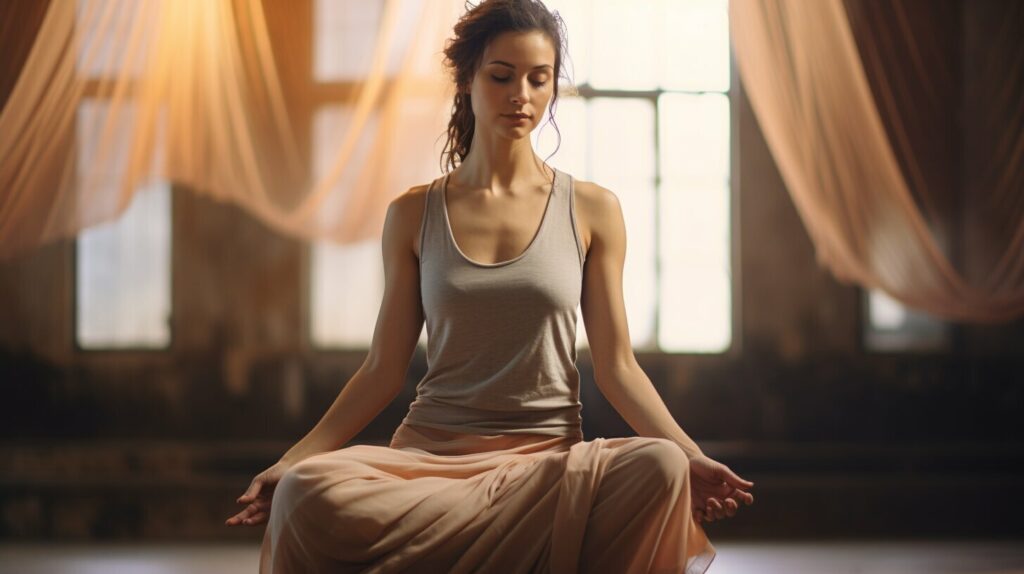
Accessories and footwear are also critical components of yoga teacher clothing. Wearing appropriate footwear, such as yoga socks or shoes with non-slip soles, can provide stability and prevent injuries. Accessories, such as scarves and jewelry, should be minimal to avoid distractions and discomfort.
Ultimately, the goal is to find a balance between comfort and professionalism. While yoga attire should prioritize comfort, it should also present a professional appearance to your students. By selecting appropriate fabrics, styles, and fits, you can confidently present yourself as a knowledgeable and dedicated yoga teacher while maintaining comfort throughout your practice and teaching sessions.
The Importance of Professionalism in Yoga Teaching
As a yoga teacher, maintaining professionalism is crucial. Your attire reflects your dedication to your craft, and it is important to project the right image to your students. Dressing appropriately conveys respect for the practice and the students you are teaching. Here are some guidelines to ensure that your attire meets the standards of professionalism:
| Guidelines | Details |
|---|---|
| Dress modestly | Avoid clothing that is too revealing or distracting. Your attire should not draw attention away from the practice or your teachings. |
| Choose appropriate colors and patterns | Neutral and solid colors or subtle patterns are generally more appropriate than bright or bold patterns. Avoid clothing with slogans or logos that may distract your students. |
| Present a clean and neat appearance | Make sure your clothing is clean, pressed, and in good condition. Avoid wearing clothing with stains, tears, or holes. |
By dressing professionally, you not only create a positive impression but also show your students that you take your role seriously. Remember to strike the right balance between comfort and professionalism to ensure that you can move freely and teach with ease.
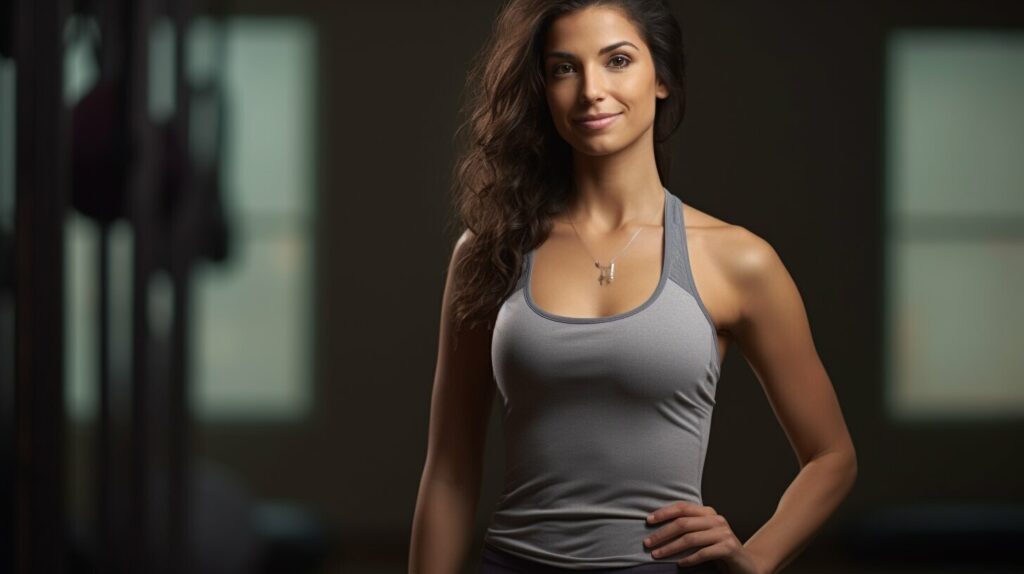
The Role of Functionality in Yoga Teacher Attire
As a yoga teacher, your attire should not only look professional but also be practical and comfortable. The right choice of clothing can enhance your performance and make your yoga practice and teaching experience more enjoyable. Here are some essential ideas to consider when choosing functional and practical yoga clothing.
Fabric Matters
When selecting yoga clothing, it is crucial to opt for fabrics that have moisture-wicking properties. Choose breathable, lightweight, and stretchy materials that move with you and don’t restrict your movements. Synthetic fabrics like polyester, nylon, and spandex are ideal for yoga wear, and they offer a wide range of styles and colours to choose from.
Organic cotton is another excellent choice for yoga clothing as it is breathable, hypoallergenic, and soft against the skin. It is also an eco-friendly option, making it ideal for environmentally conscious yogis.
Styles and Fits
Yoga clothing comes in various styles and fits, from loose-fitting to form-fitting. Loose-fitting clothing may hamper your movement during yoga practice, while form-fitting clothes may restrict blood circulation and cause discomfort. Therefore, you should choose a style that is neither too tight nor too loose, offering comfort and ease of movement instead.
Choosing clothing with a wide waistband or drawstring can also add support while performing yoga poses. For example, high-waisted leggings can provide abdominal support and help you avoid any awkward moments during inversions.
Functionality
In addition to comfort, functionality should also be a top factor when selecting yoga teacher attire. Ideally, your clothing should have pockets for storing small items such as keys or a phone. This feature is especially important if you don’t have a place to keep your belongings while teaching yoga classes.
Another essential feature to consider is flexibility. Clothing that stretches and moves with you is ideal for yoga practice as it allows you to perform different poses without any restrictions. You can also look for clothing that has reinforced seams, providing durability, and long-lasting wear.
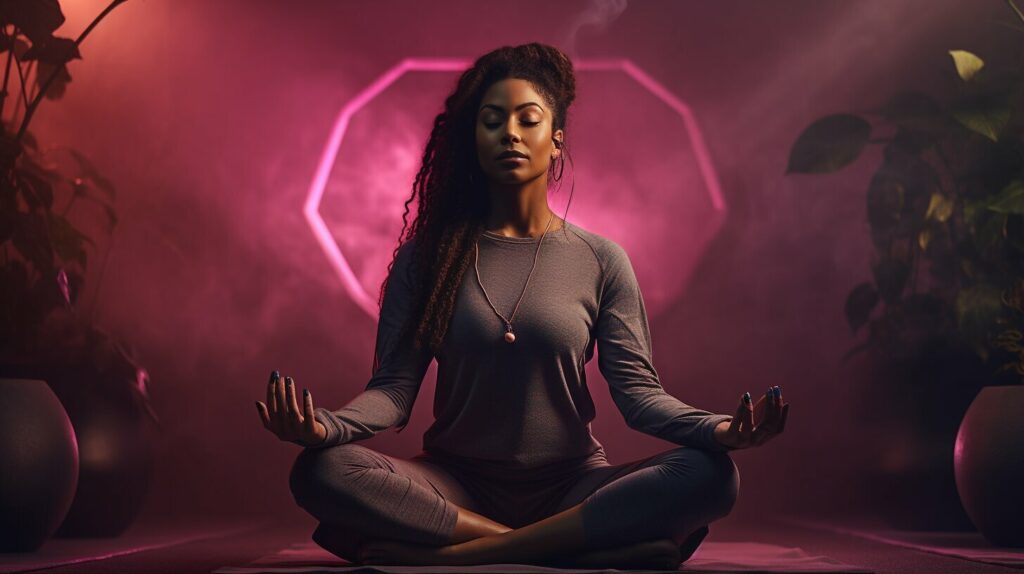
“Choosing clothing with a wide waistband or drawstring can also add support while performing yoga poses.”
Colour Choice
Colour is an essential aspect of choosing yoga teacher attire. You should aim to select colours that promote a sense of calm and tranquillity, such as earthy tones and muted shades. Bright colours or patterns can be distracting and may draw attention away from the poses you are teaching.
Conclusion
Choosing functional and practical yoga teacher attire is crucial to create a comfortable and conducive environment for your yoga practice and teaching. Remember to consider the fabric, style, and fit of your clothing and select colours that promote calmness and tranquillity. By following these tips, you can perform your yoga poses with ease and confidence while presenting yourself as a knowledgeable and dedicated yoga teacher.
Dress Code Guidelines for Different Yoga Styles
When it comes to selecting appropriate attire for your yoga classes, it’s important to consider the style of yoga you’ll be teaching. Different yoga styles may have specific dress code guidelines to ensure that you’re dressed appropriately for each style you teach. Let’s explore some recommendations for popular yoga styles:
Hatha Yoga
Hatha yoga typically involves slow, gentle movements and often includes seated or standing poses. Comfort is key when it comes to Hatha yoga attire. Opt for loose-fitting clothing that allows for ease of movement, such as yoga pants or leggings paired with a comfortable top. Avoid clothing that’s too tight or restrictive.
Vinyasa Yoga
Vinyasa yoga is a more active and dynamic style of yoga, involving a series of flowing movements. Consider wearing clothing that’s form-fitting and breathable, such as compression leggings and a moisture-wicking top. This will help to keep you cool and comfortable, even during a vigorous practice.
Ashtanga Yoga
Ashtanga yoga is a physically challenging and rigorous style of yoga that involves a set series of poses. As such, it’s important to wear clothing that allows for unrestricted movement. Consider wearing fitted clothing made from stretchy fabrics that can withstand the demands of a vigorous practice.
Restorative Yoga
Restorative yoga involves a series of gentle, relaxing poses designed to release tension and promote relaxation. Comfort is key when it comes to restorative yoga attire, so opt for loose-fitting clothing made from soft, comfortable fabrics. Consider wearing layers that can be added or removed depending on the temperature of the room.
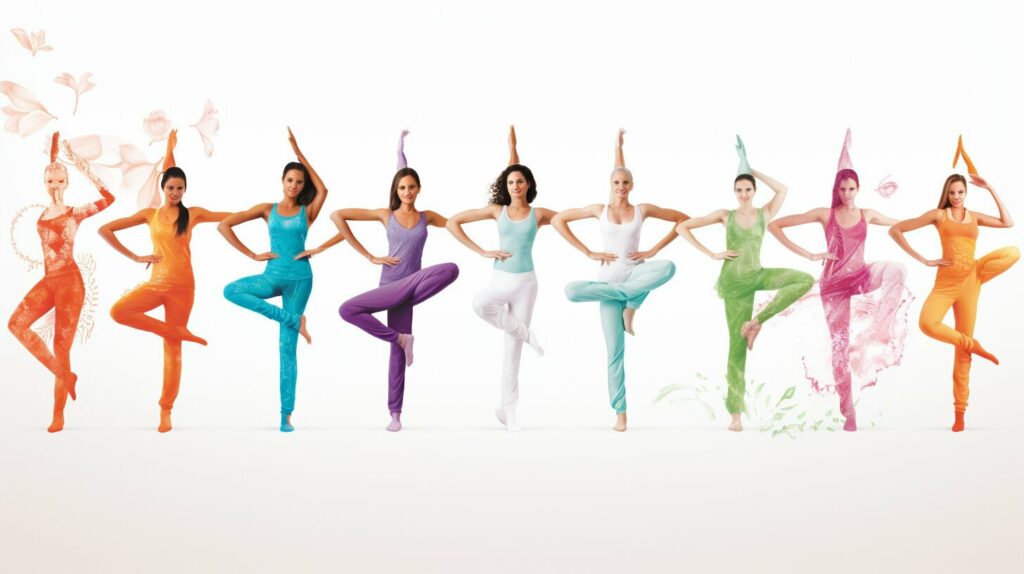
By following these dress code guidelines for different yoga styles, you can ensure that you’re dressed appropriately for each class you teach. Keep in mind that the most important factor is to prioritize comfort and functionality, allowing you to move freely and confidently lead your students through their practice.
Dressing for Different Yoga Class Settings
As a yoga teacher, you may teach classes in various settings, such as studios, gyms, or outdoor locations. It’s essential to adapt your attire to different class settings, taking into account several factors such as temperature, studio policies, and outdoor conditions. Here are some tips to help you dress appropriately for different yoga class settings:
Indoor Classes
For indoor classes, it’s essential to dress in comfortable clothes that allow ease of movement and flexibility. Choose breathable fabrics that can wick sweat away from your body, such as cotton or moisture-wicking materials like polyester blends or bamboo. Avoid loose or baggy clothing that can interfere with your movements or distract your students.
It’s also crucial to consider the studio’s temperature and policies when selecting your attire. If the studio is hot, you may opt for shorts or capris paired with a tank top or sports bra. If the studio is cold, you may layer your outfit with a long-sleeved shirt or sweater on top of your yoga clothes. Be mindful of the studio’s dress code policy, as some studios may require more modest attire.
Outdoor Classes
Teaching yoga outdoors comes with its dressing challenges, especially in unpredictable weather conditions. It’s essential to dress according to the weather, ensuring that you’re comfortable enough to lead a class. In warm weather, choose light-colored, breathable clothing to reflect the heat. You may also opt for moisture-wicking materials that help move sweat away from your body. In cold weather, layer your clothing to stay warm, but still ensure mobility, flexibility, and comfort.
When teaching outdoors, it’s also crucial to consider environmental factors. If you’re teaching on a grassy field, avoid wearing white or light-colored clothing that may get stained. If you’re teaching on a windy day, avoid loose clothing that may get blown around and cause distractions during class.
Remember that appropriate yoga attire for outdoor classes is not just about comfort and flexibility but also about safety and practicality. Choose attire that protects you from the elements, such as hats, sunglasses, and sunscreen in sunny weather or jackets and gloves in cold weather.
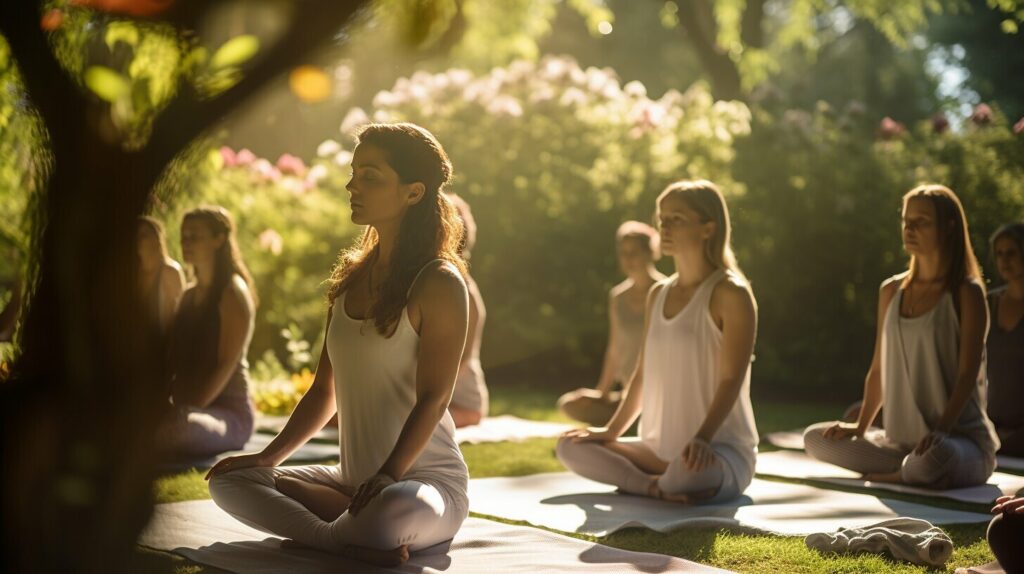
Final Thoughts
Adapting your attire to different yoga class settings is essential for ensuring that you’re dressed appropriately for any situation. Consider the temperature, studio policies, and environmental factors before selecting your attire. Always prioritize comfort, flexibility, and safety to ensure that you can lead your class confidently and focus on your students’ needs.
Accessories and Haircare for Yoga Teachers
As a yoga teacher, you want to look polished and professional while ensuring that your clothing and accessories do not interfere with your ability to teach or your students’ practice. Here are some tips for selecting accessories and caring for your hair while teaching yoga.
Yoga Teacher Accessories
When it comes to accessories, less is often more. Avoid wearing anything that could be distracting to your students, such as dangling bracelets or statement necklaces. Instead, opt for subtle pieces such as stud earrings, simple necklaces, or a small bracelet. These accessories can complement your outfit without drawing attention away from the practice.
Another accessory to consider is a watch. A watch can help you keep track of time during class without needing to look at your phone or a clock. Choose a watch with a simple design and a comfortable strap to ensure that it will not be a distraction during your practice or teaching.
If you like to wear a hair tie around your wrist, choose a neutral-colored band that matches your outfit. This way, you can have a hair tie on hand without it being a distraction.
Haircare Tips
While you want to look your best as a yoga teacher, you also want to ensure that your hair does not get in the way of your practice or teaching. Here are some haircare tips:
- Keep your hair tied back or in a bun to prevent it from falling in your face during practice.
- Avoid using hair products that have a strong scent or make your hair greasy, as this can be distracting to your students.
- If you have long hair, consider using a hair tie that will not snag or pull your hair, such as a scrunchie or a hair tie made specifically for yoga.
By following these tips, you can ensure that your accessories and hairdo do not interfere with your teaching and that your students can focus on their practice.
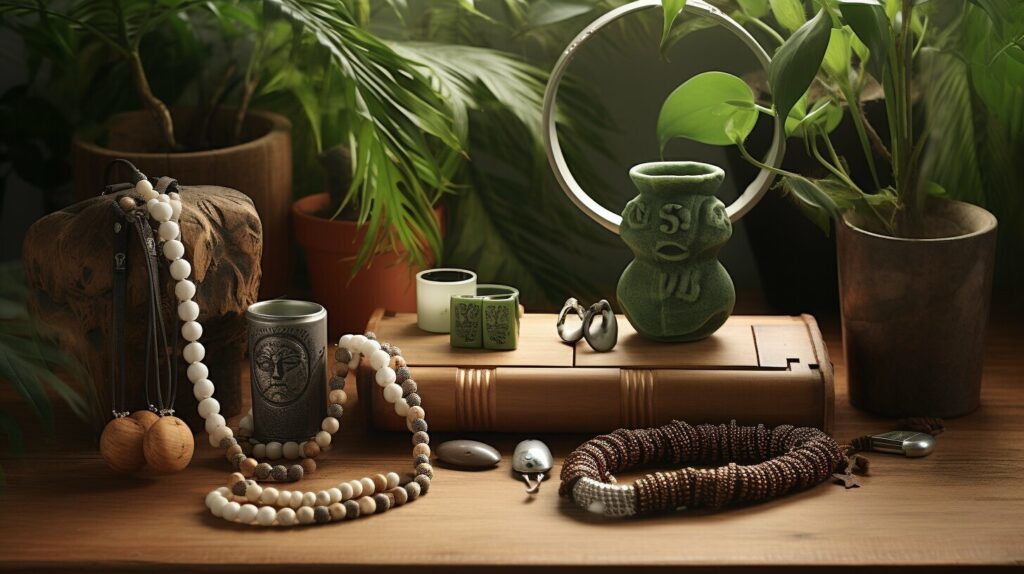
Yoga workshops and retreats are fantastic opportunities for yoga teachers to expand their knowledge and learn from experts in the field. As a yoga teacher attending a workshop or retreat, it’s essential to be mindful of the dress code etiquette to ensure a positive experience for yourself and others.
The dress code for workshops and retreats may vary depending on the type of event and its location. Some may require you to wear specific colors or styles, while others may have more relaxed dress codes. It’s important to research the event beforehand and adhere to any specific guidelines provided.
| Tip: | When in doubt, it’s always better to err on the side of caution and dress a little more conservatively than usual. |
|---|
It’s essential to prioritize comfort when selecting your attire for workshops and retreats. These events can be physically and mentally demanding, and you don’t want your clothing to hinder your movements or distract you from the experience. Choose clothing that is breathable, flexible, and easy to move in.
Additionally, it’s important to consider the modesty of your attire. Yoga is a spiritual practice, and some workshops and retreats may have a more traditional approach to dress. Opt for clothing that covers your shoulders, chest, and midriff unless you’re attending a retreat or workshop that specifically allows more revealing clothing.
Accessories can be a great way to add some personality to your attire, but it’s essential to choose wisely. Avoid accessories that make noise or cause distractions to other attendees. A simple piece of jewellery or a headband may be all you need to complete your outfit.
When it comes to haircare, it’s best to keep it simple and practical. Tie your hair back in a secure bun or ponytail to keep it out of your face and avoid any distractions during the practice.
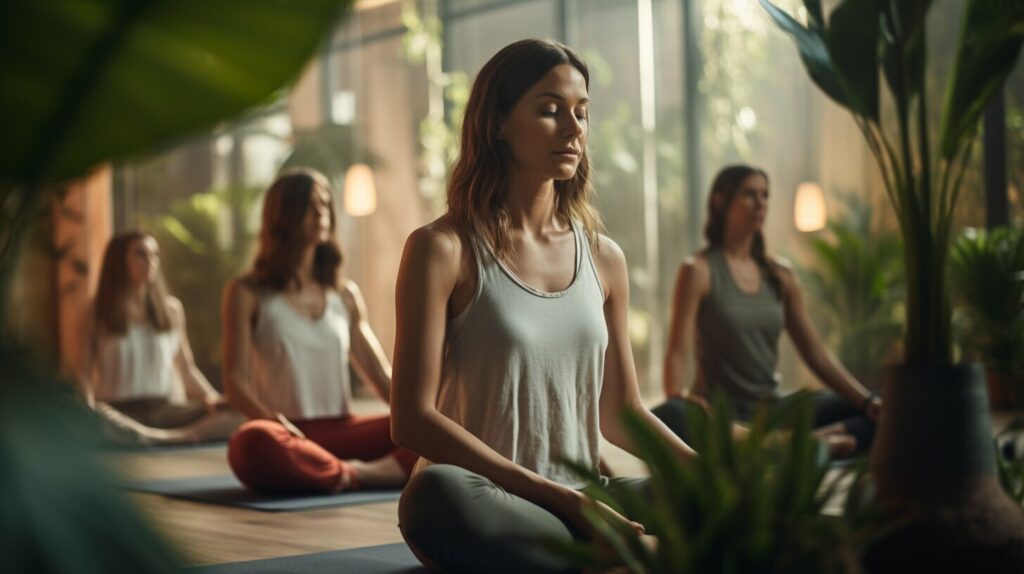
Attending a yoga workshop or retreat can be a transformative experience, and adhering to the dress code etiquette is just one way to contribute to the positive atmosphere. Remember to prioritize comfort, modesty, and simplicity in your attire, and enjoy the journey.
Essential Tips for Dressing as a Male Yoga Teacher
As a male yoga teacher, you have a unique set of considerations when it comes to choosing appropriate attire for teaching classes. Not only do you need to prioritize comfort and functionality, but you also need to present a professional appearance that inspires confidence in your students. Here are some essential tips to help you dress confidently and appropriately for your role:
1. Opt for Breathable Clothing
During a yoga class, you’ll likely work up a sweat, which is why it’s crucial to choose breathable fabrics that can wick away moisture. Look for materials like bamboo, cotton, or moisture-wicking synthetic blends that are comfortable, flexible, and can help keep you cool and dry.
2. Choose Fitted Clothing
Loose, baggy clothes can be distracting and can interfere with your students’ ability to see your body alignment during poses. Instead, opt for fitted clothing that allows for ease of movement and will not get in the way during yoga practice.
3. Select Modest Clothing
Modesty is a crucial consideration for yoga teachers. Avoid wearing shorts that are too short or tops that expose too much skin. Choose clothing that provides adequate coverage and allows you to focus on teaching and supporting your students.
4. Accessorize Mindfully
Accessories can complement your yoga teacher attire, but they should be minimal and not pose a distraction during class. Choose simple, understated accessories like a watch, a wristband, or a necklace with spiritual significance. Avoid wearing rings or bracelets that can make noise or be disruptive.
5. Keep Your Grooming Neat and Tidy
Grooming is an essential part of your overall appearance as a yoga teacher. Keep your hair neat and out of your face, and your nails clean and trimmed. Avoid wearing strong scents or colognes that may be overpowering to your students.
By following these tips, you can confidently present yourself as a knowledgeable, professional, and dedicated male yoga teacher. With the right attire, you can focus on your practice, connect with your students, and create a positive learning environment for all.
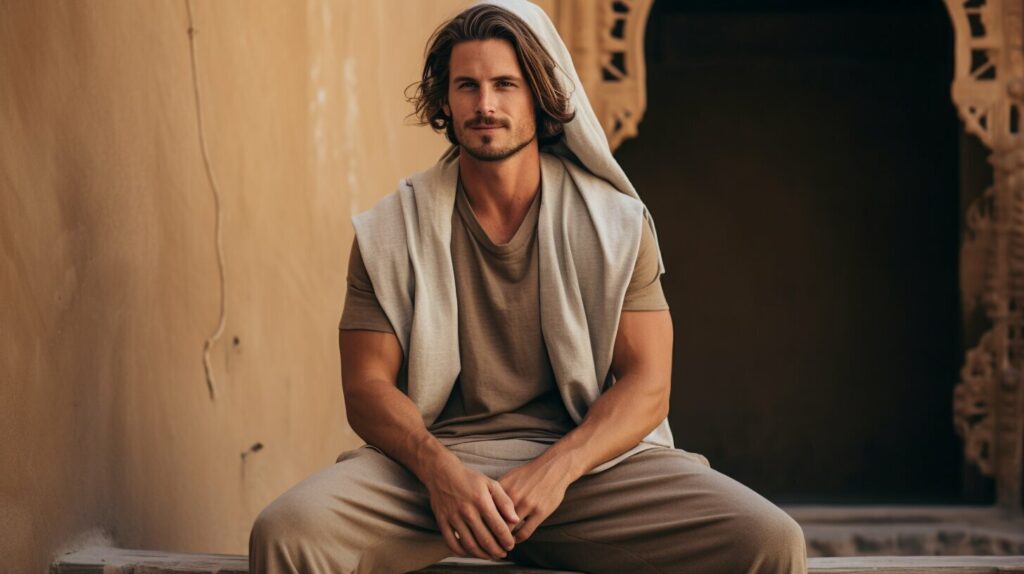
Pregnancy requires specific adaptations in yoga attire to ensure comfort, support, and flexibility during practice and teaching sessions. As a pregnant yoga teacher, the key is to listen to your body and make adjustments as necessary.
Comfort is key: Choose yoga clothing made of stretchy, breathable fabric that doesn’t constrict your growing belly or cause any discomfort. Look for tops with built-in bras for extra support, and consider wearing leggings with a waistband that can be adjusted as your belly grows.
Support your changing body: As your body changes, it’s essential to support your growing belly, hips, and lower back. Invest in a good quality maternity yoga pants or leggings that offer support around your belly and lower back. You can also consider wearing a supportive maternity belt that can be worn under your clothes during yoga practice.
Avoid overheating: As a pregnant yoga teacher, you may feel warmer than usual during practice. Wear light, breathable clothing that allows your skin to breathe and wicks away sweat, keeping you cool and comfortable. Consider layering your clothing so you can easily remove or add layers, depending on how you feel.
Modify your practice: As your body changes during pregnancy, it’s essential to modify your yoga practice to accommodate your growing belly and changing center of gravity. Avoid poses that put pressure on your belly or involve lying on your back for extended periods. Instead, focus on poses that encourage stability and balance, such as standing poses, gentle twists, and side stretches.
Don’t forget your safety: Always prioritize your safety during yoga practice, especially during pregnancy. Avoid movements that feel uncomfortable or cause pain, and always listen to your body. Consider attending prenatal yoga classes specifically designed for pregnant women, where you can learn modifications and practice poses that are safe and beneficial during pregnancy.
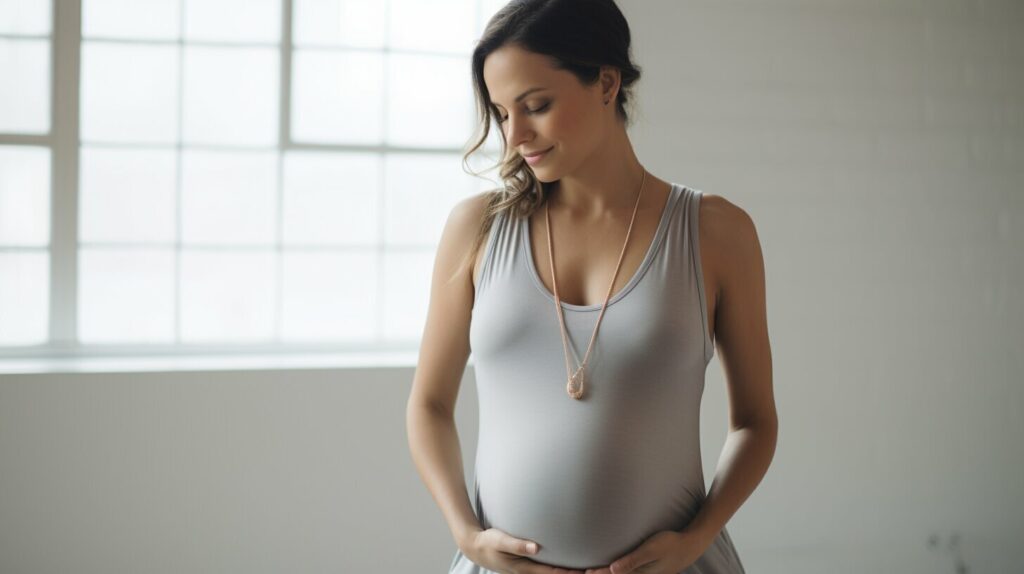
A well-planned yoga teacher dress code is crucial for maintaining professionalism while ensuring comfort during yoga classes. By understanding the purpose of a dress code and considering the specific needs of different yoga styles and class settings, you can present yourself as a knowledgeable and dedicated yoga teacher.
Remember, comfort is key when it comes to yoga clothing, so prioritize breathable, stretchy fabrics and practical features like moisture-wicking properties and pockets. While maintaining a professional appearance is important, it’s essential to choose attire that allows freedom of movement and promotes ease during yoga practice.
Whether you’re a male or a pregnant yoga teacher, there are specific guidelines and adaptations you can use to ensure that your attire is appropriate and comfortable. And don’t forget about accessories – simple pieces like hair ties and yoga socks can complete your outfit without causing distractions.
Overall, the essential elements of a yoga teacher dress code involve finding the right balance between professionalism and comfort, while adhering to specific guidelines for different yoga styles and class settings. By following these guidelines, you can ensure that you are presenting yourself as a knowledgeable and dedicated yoga teacher, giving your students the best possible experience.
FAQ
Q: What is the purpose of a dress code for yoga teachers?
A: The purpose of a dress code for yoga teachers is to create a conducive learning environment and maintain professionalism.
Q: Why is comfort important in yoga attire?
A: Comfort is important in yoga attire as it allows for ease of movement during yoga practice.
Q: How can I maintain professionalism in my yoga teaching attire?
A: You can maintain professionalism by dressing modestly, choosing appropriate colors and patterns, and presenting a clean and neat appearance.
Q: What should I consider when selecting yoga teacher attire for different yoga styles?
A: When selecting yoga teacher attire for different yoga styles, consider the specific dress code guidelines for each style, ensuring that you’re dressed appropriately.
Q: How should I adapt my attire for different yoga class settings?
A: Adapt your attire for different yoga class settings by considering factors such as temperature, studio policies, and outdoor conditions.
Q: What accessories and haircare tips should I keep in mind as a yoga teacher?
A: Choose suitable accessories that complement your outfit without causing distractions. Additionally, manage your hair in a way that is practical and comfortable during yoga classes.
Q: Are there dress code etiquette guidelines for yoga workshops and retreats?
A: Yes, yoga workshops and retreats often have specific dress code expectations. Familiarize yourself with the dress code etiquette for these events to ensure that you’re prepared.
Q: What are some essential tips for dressing as a male yoga teacher?
A: Male yoga teachers should consider suitable clothing options, grooming practices, and accessories to present themselves professionally.
Q: How can I adapt my yoga attire if I am pregnant?
A: If you are pregnant, choose yoga attire that provides comfort, support, and flexibility for your changing body.
Q: Why is a well-thought-out yoga teacher dress code important?
A: A well-thought-out yoga teacher dress code is important as it helps strike the right balance between professionalism and comfort, ensuring that you present yourself as a knowledgeable and dedicated yoga teacher.
